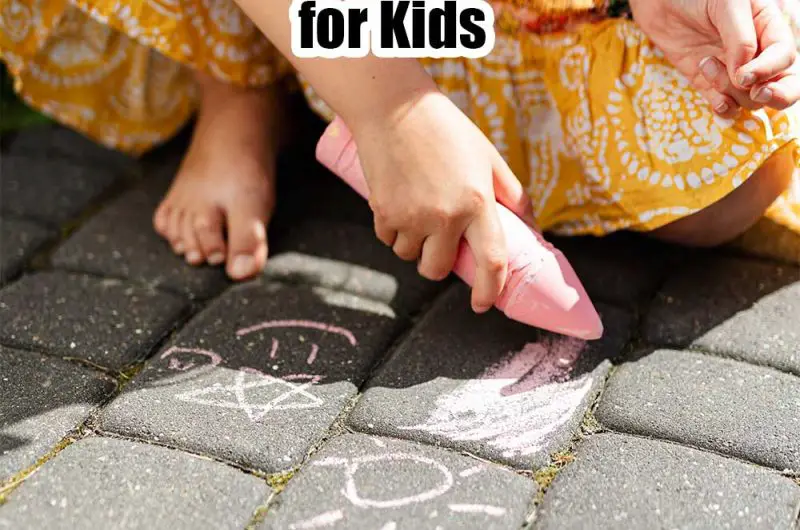DIY Sidewalk Chalk: A Fun and Easy Project for Kids

Are you looking for a fun and easy DIY project to do with your kids? Making your own floor chalk is a great way to spend time together and create a fun activity for your kids to enjoy.
With just a few simple materials, you can create colorful chalk that your kids can use to draw on sidewalks, driveways, and other outdoor surfaces.
What You’ll Need
Plaster of Paris
Tempera paint or food coloring
Water
Mixing bowl
Spoon or whisk
Silicone molds or cardboard tubes (to make your own molds)
Cooking spray or petroleum jelly (to coat molds)
Instructions:
Step 1
The first step in making your own floor chalk is to mix Plaster of Paris and water in a mixing bowl. Plaster of Paris is a type of gypsum that is commonly used for art and craft projects, and it can be found at most craft stores. The ratio of Plaster of Paris to water should be two parts Plaster of Paris to one part water. This will create a mixture that is thick and creamy, but not too runny.
It’s important to mix the Plaster of Paris and water thoroughly to ensure that there are no lumps in the mixture. You can use a spoon or whisk to mix the ingredients together. If you notice any lumps, you can break them up with a spoon or use a whisk to blend the mixture until it is smooth.
Once the mixture is smooth, you can move on to the next step, which is to add in the tempera paint or food coloring to create the desired color. Adding color to the mixture is optional, but it can make the chalk more fun and interesting for kids to use.
Step 2
Adding tempera paint or food coloring to the Plaster of Paris mixture in order to create the desired color for your homemade chalk.
Tempera paint is a water-soluble paint that is commonly used in art projects, and it comes in a variety of colors. Food coloring is also a great option for coloring your chalk, especially if you want to create bright and vibrant colors.
To add color to your Plaster of Paris mixture, start by adding a small amount of paint or food coloring to the mixture and mix well. Keep adding more paint or food coloring until you achieve the desired color. You can use a spoon or whisk to mix the color into the mixture until it is evenly distributed.
It’s important to mix the color well to ensure that the chalk has an even and consistent color throughout. If you want to create multiple colors of chalk, you can divide the mixture into different bowls and add different colors to each bowl.
One thing to keep in mind when adding color to your mixture is that the color will lighten as the mixture dries. So, if you want a darker color, it’s a good idea to add a bit more paint or food coloring than you think you need.
Step 3
Coating your silicone molds or cardboard tubes with cooking spray or petroleum jelly to prevent the chalk from sticking to the molds.
Silicone molds are a popular choice for making homemade chalk because they come in a variety of shapes and sizes and are easy to use. Cardboard tubes, such as toilet paper rolls or paper towel rolls, can also be used to make your own molds.
To coat your molds, start by applying a thin layer of cooking spray or petroleum jelly to the inside of the molds. This will create a non-stick surface that will make it easier to remove the chalk once it has dried.
If you are using cardboard tubes to make your molds, you can cut them to the desired length and then apply the cooking spray or petroleum jelly to the inside of the tube.
Be sure to apply the cooking spray or petroleum jelly evenly and thoroughly to ensure that the chalk doesn’t stick to the molds. You can use a paper towel or your fingers to spread the coating around the inside of the molds.
Coating your molds is an important step in the process of making homemade chalk, as it will make it much easier to remove the chalk once it has dried. Without a non-stick surface, the chalk may get stuck inside the molds and be difficult to remove.
Step 4
Pouring the Plaster of Paris mixture into the prepared molds.
To pour the mixture into the molds, start by slowly and carefully pouring the mixture into the molds until they are about 3/4 full. Be sure to pour the mixture in a slow and controlled manner to avoid creating air bubbles in the mixture.
If you are using silicone molds, you can tap the molds gently on a flat surface to help release any air bubbles that may have formed. You can also use a toothpick or small spoon to carefully remove any air bubbles that may have formed on the surface of the mixture.
If you are using cardboard tubes as molds, you can place them in a shallow dish or tray to catch any excess mixture that may spill out.
Once you have filled the molds with the Plaster of Paris mixture, you can smooth the surface of the mixture with a spoon or spatula to create an even surface.
It’s important to work quickly when pouring the mixture into the molds, as the Plaster of Paris mixture will start to harden within a few minutes. Once the mixture has started to harden, it will be difficult to smooth the surface and remove any air bubbles.
Step 5
Letting the Plaster of Paris mixture dry and harden completely before removing the chalk from the molds.
The drying time will depend on the size and shape of your molds and the thickness of the chalk. In general, it can take anywhere from a few hours to overnight for the chalk to dry completely.
To check if the chalk is dry, you can gently touch the surface of the chalk. If it feels hard and dry to the touch, it is ready to be removed from the molds.
To remove the chalk from the molds, gently twist and pull the molds to release the chalk. If the chalk is still stuck in the mold, you can gently tap the mold on a flat surface to help release it.
If you are using cardboard tubes as molds, you can carefully cut the tubes away from the chalk with scissors or a craft knife.
Once the chalk is removed from the molds, you can let it air dry for a few more hours to ensure that it is completely dry before using it.
It’s important to let the chalk dry completely before using it, as any remaining moisture in the chalk can cause it to break or crumble when used.
Step 6
Decorating and customizing your homemade chalk.
Once the chalk has dried completely, you can use paint or markers to decorate and personalize your chalk. This is a fun and creative step that kids will love!
You can use acrylic paints, tempera paints, or even washable markers to decorate your chalk. You can also mix and blend different colors to create unique and colorful chalk.
Some ideas for decorating your chalk include painting it with stripes, polka dots, or even adding glitter or sequins to the surface. You can also write your name or draw pictures on the surface of the chalk.
If you are using cardboard tubes as molds, you can cut the chalk into smaller pieces before decorating them to make it easier to handle.
It’s important to use non-toxic and washable paints and markers when decorating your chalk, especially if you plan to use it with children.
Step 7
Allowing the paint or marker to dry completely before using the chalk.
Once you have decorated your chalk with paint or markers, it’s important to let it dry completely before using it. This will ensure that the paint or marker adheres properly to the surface of the chalk and doesn’t smear or rub off during use.
The drying time for the paint or marker will depend on the type of paint or marker you used and the thickness of the layer applied. In general, it’s best to let the paint or marker dry for at least a few hours before using the chalk.
If you are in a rush, you can use a hair dryer on the lowest heat setting to speed up the drying process. However, be sure to hold the hair dryer a few inches away from the chalk to avoid melting or deforming it.
Once the paint or marker is completely dry, you can use the chalk as you would any other chalk. You can use it to draw on sidewalks, chalkboards, or paper.

More interesting articles you may be interested in reading:

Potato Grow Bags: The Key to a Convenient, Pest-free, and Bountiful Harvest
Fluffy Miniature Cows Are SO CUTE and They Make GREAT PETS.
20 Ways to Deter Rabbits from Eating Your Garden
How To Get Rid Of Wasps With Just A Brown Paper Bag
How To Get Rid Of Any Burrowing Animals With This Dawn Soap Solution
Thanks for reading and be sure to share this info with your friends using the social share buttons below.
Talking about social stuff, consider liking our Facebook page to keep up to date with our articles. Check out our other articles for more mental scoops!



